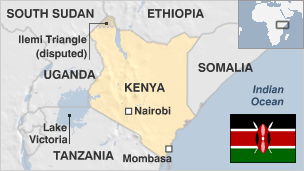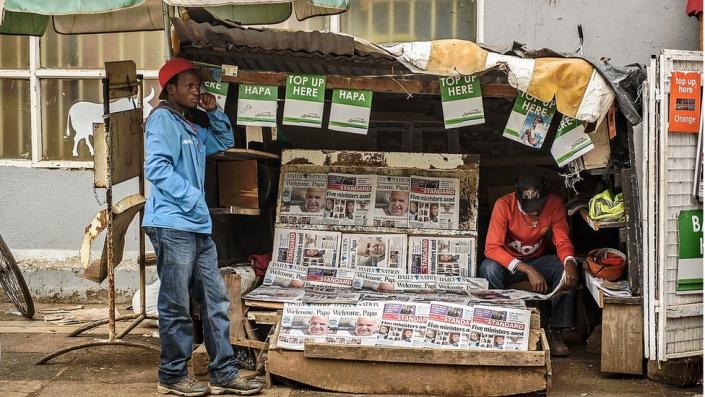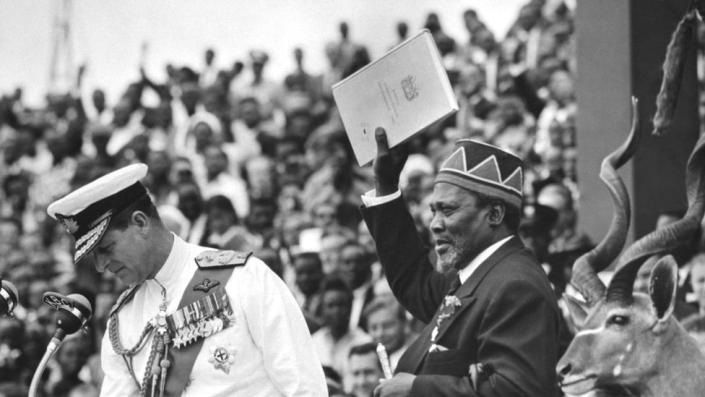
Situated on the equator on Africa’s east coast, Kenya has been described as “the cradle of humanity”.
In the Great Rift Valley palaeontologists have discovered some of the earliest evidence of man’s ancestors.
In the present day, Kenya’s ethnic diversity has produced a vibrant culture but is also a source of conflict.
The Islamist militant Al-Shabab movement, active in Somalia, has also been launching a growing number of attacks in Kenya, including the 2013 Westgate shopping mall in Nairobi and the 2015 attack on Garissa University College in northwest Kenya.
Other pressing challenges include high unemployment, crime and poverty. Droughts frequently put millions of people at risk.
-
Population: 55 million
-
Area: 580,367 sq km
-
Major languages: Swahili, English
-
Major religion: Christianity
-
Life expectancy: 64 years (men) 69 years (women)
President: William Ruto


In August 2022, Deputy President William Ruto narrowly won the presidential election. He took 50.5% of the vote. His main rival, Raila Odinga, got 48.8% of the vote
The incumbent president Uhuru Kenyatta was not eligible for a third term under Kenya’s constitution.
On 22 August, Odinga filed a petition at the Kenyan Supreme court challenging the results, but on 5 September, the Kenyan Supreme Court rejected the challenge and upheld Ruto’s victory.
William Ruto had a childhood that epitomises the lives of many poor Kenyans. He went to primary school barefoot, wearing his first pair of shoes at the age of 15.
Mr Ruto ran his campaign under the banner of Kenya Kwanza, Swahili for Kenya First, with a promise to grow the economy.
Kenya’s official unemployment rate for 18 to 34-year-olds is nearly 40%, and the economy is not creating enough jobs to absorb the 800,000 young people joining the workforce every year.
Ruto has promised a bottom-up approach to the economy, saying it will benefit the poor who are bearing the brunt of the cost of living crisis that has hit the world following the coronavirus pandemic and the war in Ukraine.


A handful of major commercial companies dominates the media industry, operating alongside state-owned Kenya Broadcasting Corporation (KBC).
TV is the main news source in urban areas. Internet use is high by regional standards, driven by the use of mobile devices.
The competitive press scene is the most sophisticated in the region. Newspapers are free to criticise politicians and the government.
Some key dates in Kenya’s history:


c 3.3 million BC – Evidence of some of the earliest human tools have been found in Kenya, suggesting that it was the cradle of humanity from which descendants moved out to populate the world.
1895 – Formation of British East African Protectorate, which becomes crown colony of Kenya – administered by a British governor – in 1920.
1944 – Kenyan African Union (KAU) formed to campaign for African independence. First African appointment to legislative council.
1963 – Kenya gains independence. Opposition groups are stifled and the country survives ethnic tensions and a coup attempt.
1991 – Kenya moves to a multiparty political system after 26 years of single-party rule.
1998 – Al-Qaeda operatives bomb the US embassy in Nairobi, killing 224 people and injuring thousands.
2007 – Disputed general elections are followed by deadly violence.
2009 – Kenya says that at least 10 million people, or one third of the population, are in need of food aid. The government mobilises the military to distribute food, water and medicines to areas hit hardest by drought.
2011 – Kenya intervenes in conflict in Somalia and subsequently suffers several apparent reprisal attacks, including the 2013 massacre at Westgate shopping mall in Nairobi and the 2015 attack on Garissa University College in the northwest.




